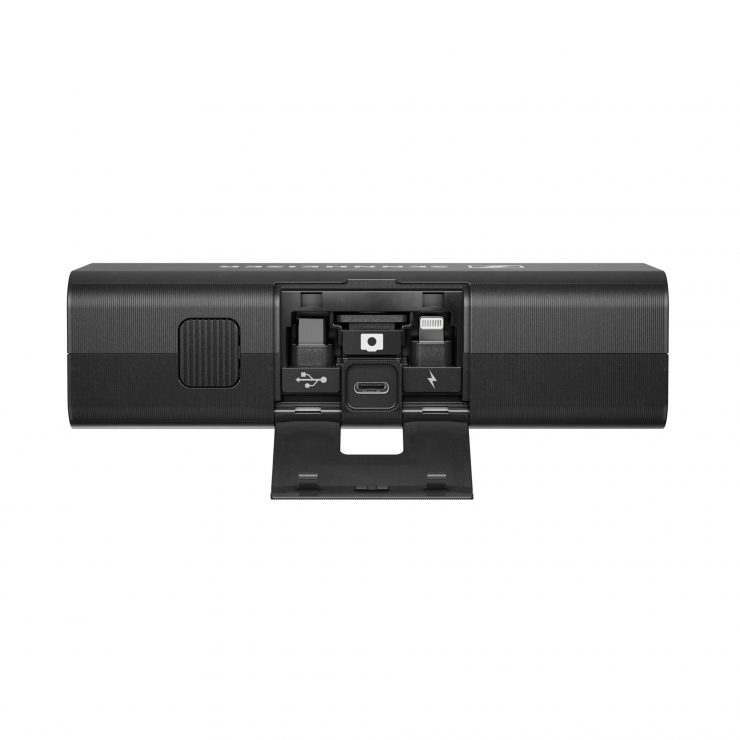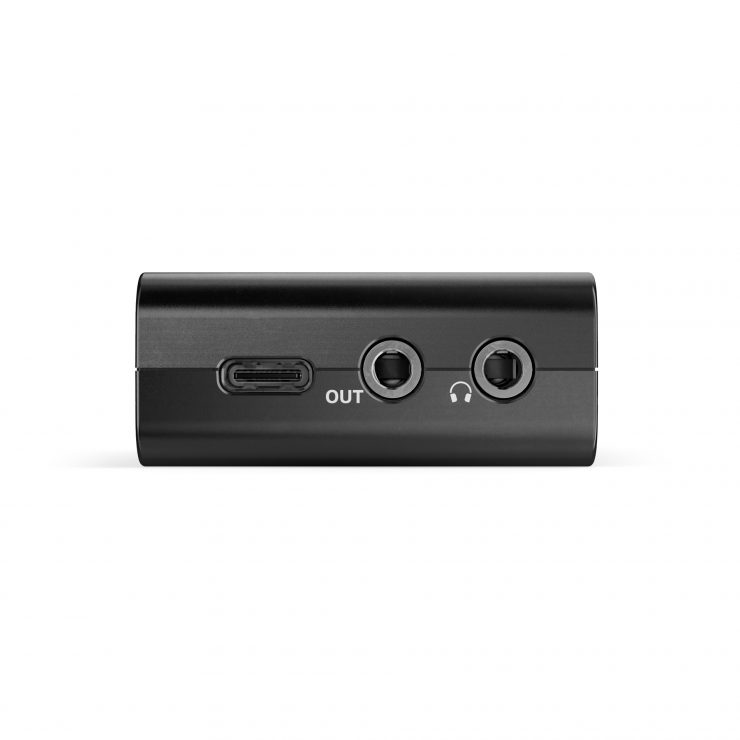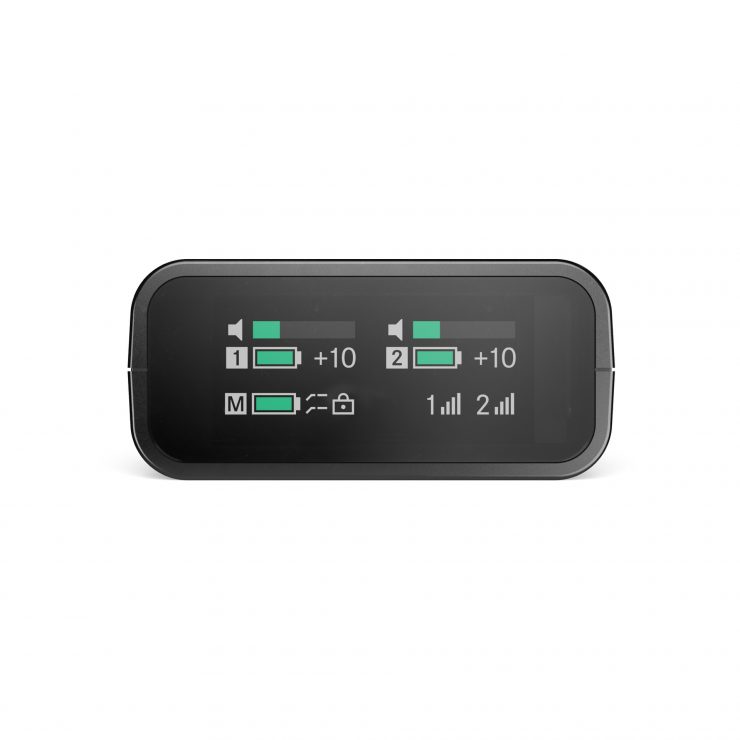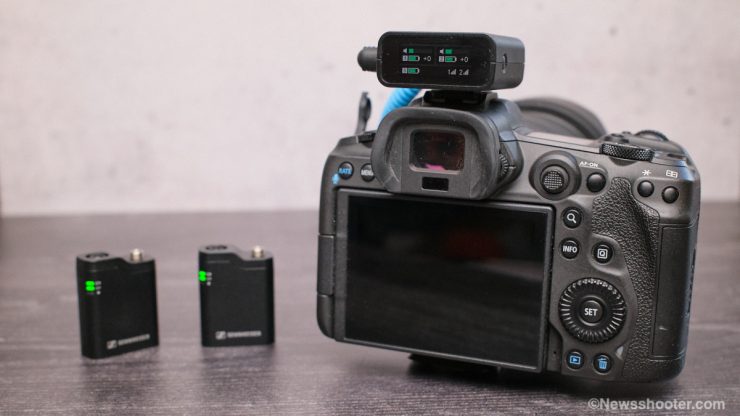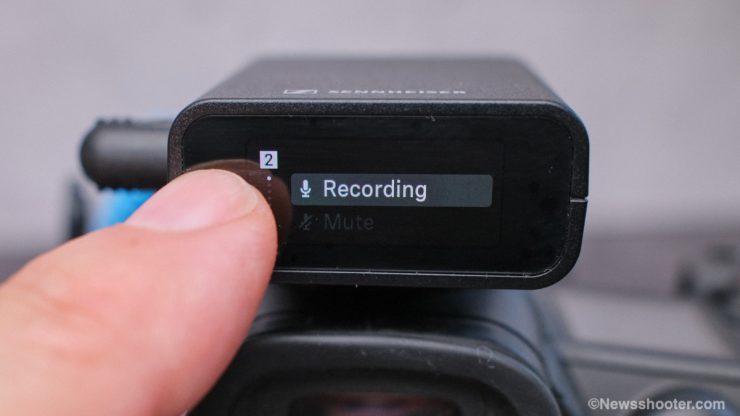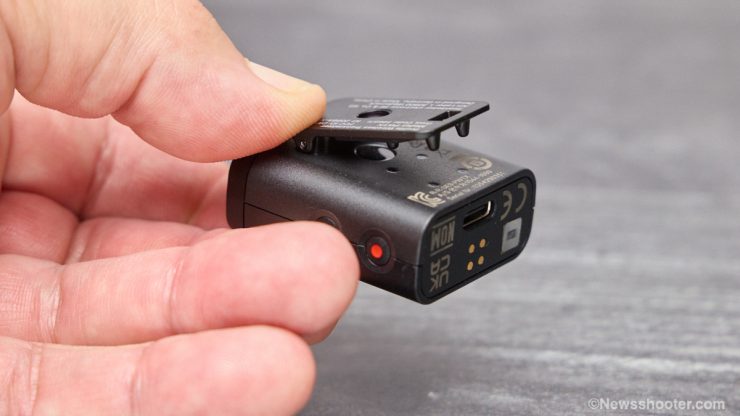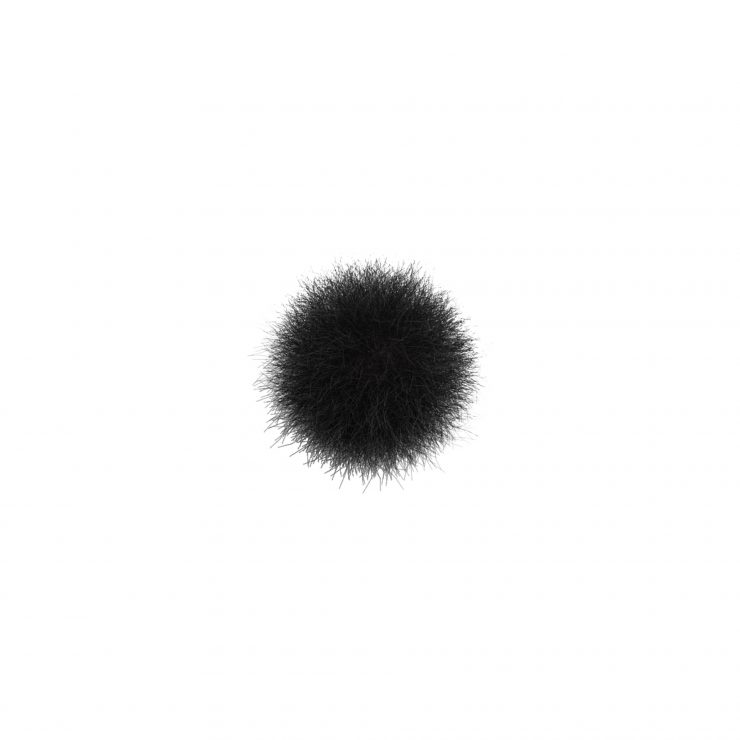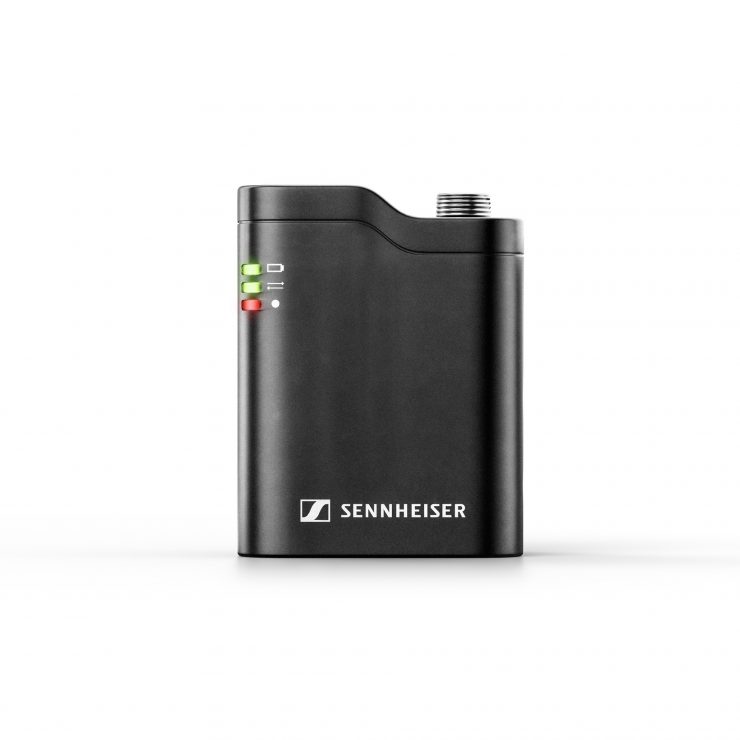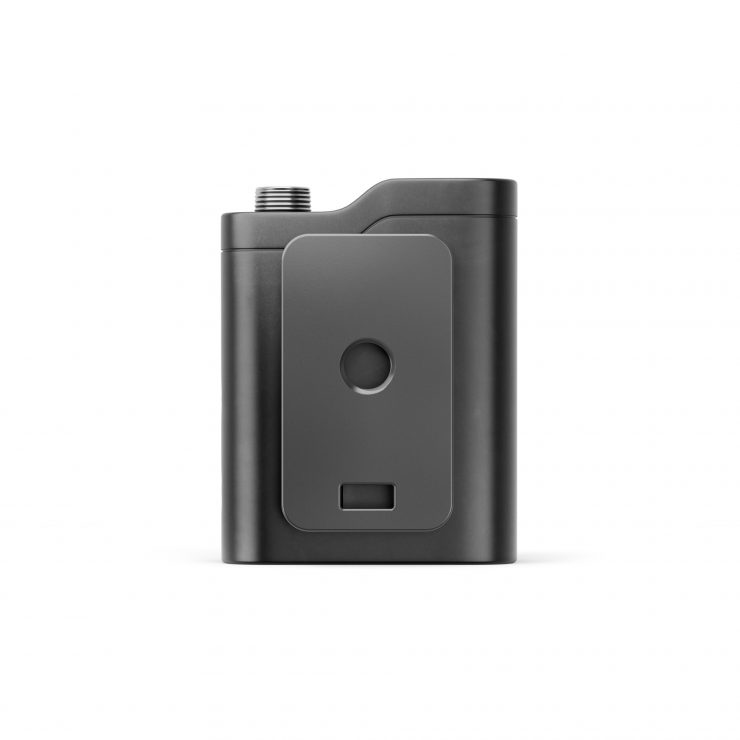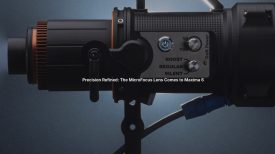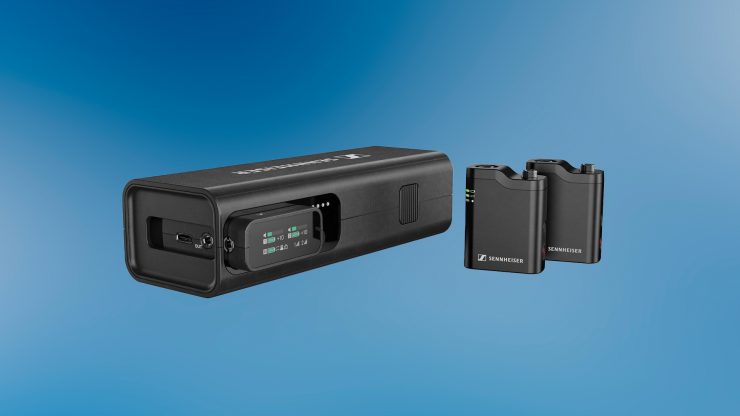
The Sennheiser Profile Wireless is an audio-capturing multitool. It is a solution for photojournalists, filmmakers, videographers, and content creators. This all-in-one system includes a 2-channel 2.4 GHz receiver, two clip-on transmitters with an internal omnidirectional microphone and internal recording capabilities, accessories for use with cameras, mobile devices, and computers, a charging bar, and a carrying pouch for USD $299.
Key features
- Up to 245 m wireless range
- 30 hours of internal recording (24 Bit/48 kHz)
- 78.5dB (A) signal-to-noise ratio
- Backup recording function activated when signal is weak or link is disturbed
- Lockable lavalier connector
- Dedicated headphone output on receiver
What’s Included
The Profile comes with many accessories. Out of the box, you can use it with a 3.5mm camera input, a mobile phone with Lightning and USB-C connectors, or a computer with USB-C. All the cables and adapters are included. The only thing missing is a lavalier microphone. If you are like me, you probably have a few already. I use the Sanken COS-11D ($389 USD) with all my 3.5mm input wireless systems. Sennheiser has a pretty good ME 2 Omnidirectional Lavalier that retails for $129.95.
The locking connector is much appreciated. This tells me Sennheiser takes the Profile Wireless seriously for field production as well as content creators.

- 2 x Sennheiser Profile Wireless Clip-On Transmitter/Recorder with Built-In Microphone (2.4 GHz)
- Sennheiser Profile Wireless Microphone Receiver for Camera & Smartphone (2.4 GHz)
- Sennheiser Profile Wireless Charging Bar (2.4 GHz)
- 2 x Sennheiser Profile Wireless Windscreen for Clip-On Transmitter
- 2 x Sennheiser Profile Wireless Clip Magnet for Transmitter
- Windscreen for Charging Bar
- USB-C Adapter for Receiver
- Lightning Adapter for Receiver
- Cold Shoe Mount for Receiver
- USB-C to USB-C Cable
- 3.5 mm TRS Coiled Cable
- Profile Wireless Pouch
- Limited 2-Year Manufacturer Warranty
The Profile Wireless boasts 7+ hours of runtime and 15+ hours of usable runtime with the charging bar—which also doubles as a handheld microphone. This is the first and only 2.4GHz system with an integrated handheld option; other systems have a charging case only and cannot be used while charging. The setup is quick and easy, with no app required, and Profile Wireless is compatible with a wide range of cameras and smart devices; plus with the 3.5mm locking connector on the transmitter, you can use a Lavalier Microphone.
The Sennheiser Profile Wireless has 1/4 20″ stand mounts on all components (mics, receiver, charging bar), which opens up interesting use cases that others do not. Additionally, the receiver has a gyro sensor that, when activated in the menu, turns the LCD display 180 degrees. This makes the receiver readable when rotated.
Profile Wireless System Specifications
- RF link: 2400 – 2480 MHz
- Audio frequency response: 60 – 20,000 Hz (110 – 20,000 Hz with low-cut filter activated)
- Audio THD: < 1.5 %
- Signal-to-noise ratio: typically 78.5 dB (A)
- Transmission range (line of sight): ≤ 245 m
- Transmission range (with body shielding): ≤ 150 m
- System latency: < 8 ms
- Operating temperature range: -10 to +45 C (32° F to 122° F)
- Charging temperature range: 0 to +45 C (32° F to 122° F)
- Operating humidity range (relative): 25 – 95 % (non-condensing)
Charging Bar
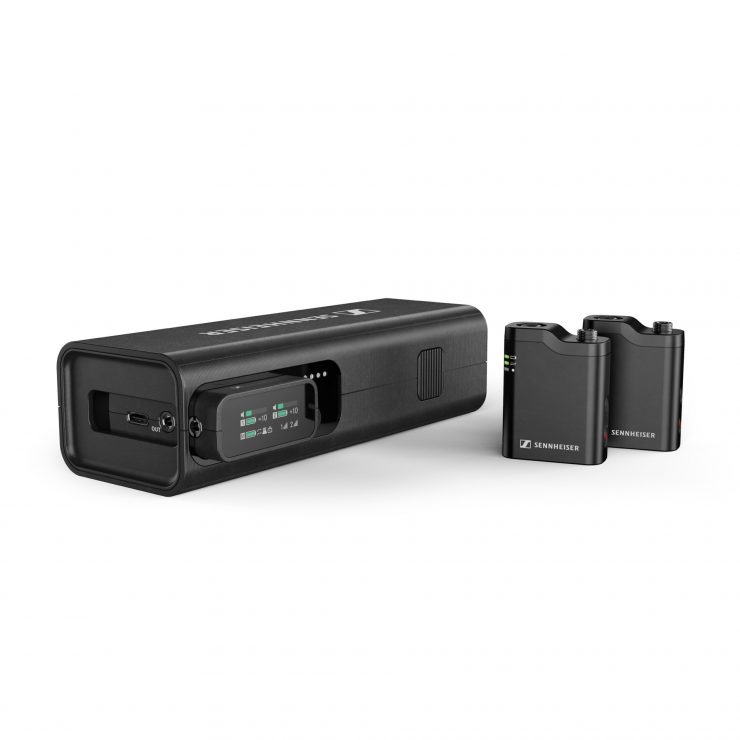
The multifunctional charging bar is an all-new way to store the system and its accessories, charge up all three devices simultaneously, and use it as a handheld microphone for interviews or a desktop mic with a mini tripod with a 1/4 20″ screw thread swivel head.
It has a built-in nonreplaceable battery that you can charge via USB-C. When you are done using the Profile Wireless, you pop the two TX’s and the RX into it, and it starts charging them.
It also stores the system’s key components, such as the magnets for the transmitters, USB-C and Lightning adapters, and the cold shot adapter for the RX. The only accessories that don’t get stored in the Charging Bar are the 3.5 mm cable, USB-C cable, and windscreens. These fit in the lid of the included soft-sided carrying case.
The Charging Bar uses a maximum of 1.5 A to charge. From 0 to 100%, charging takes 3 hours.
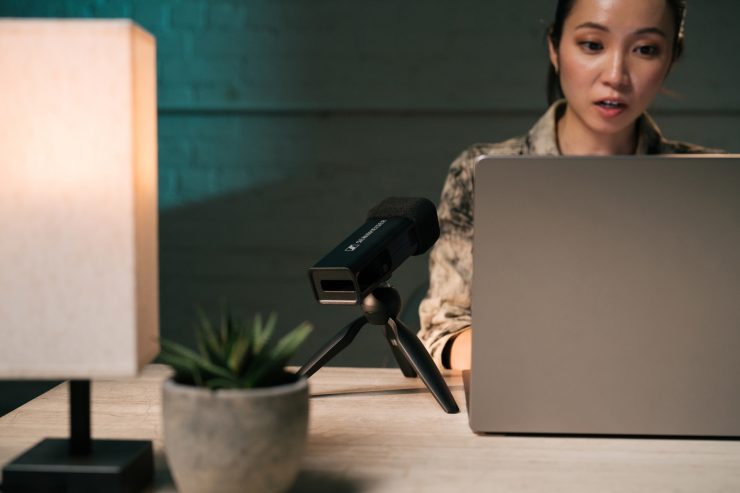
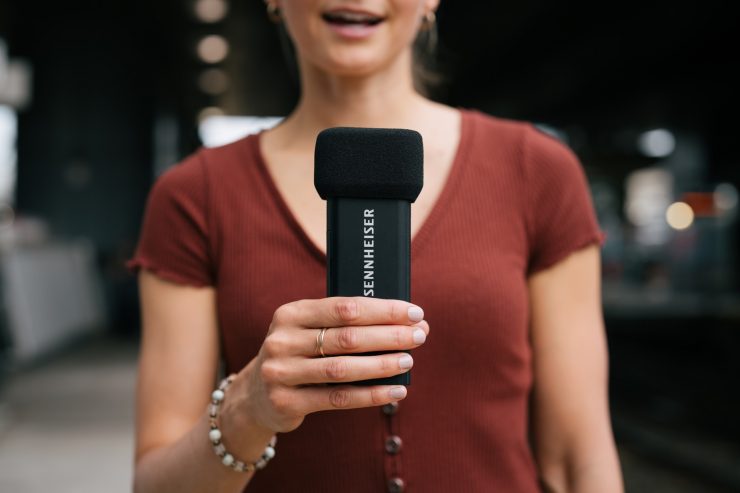
Charging Bar Specifications
- Power supply: USB-C, charging current max. 1.5 A
- Charging time (0–100%): < 3 h
- Battery capacity: 2000 mAh / 7400 mWh
- Dimensions: 152 x 41 x 55 mm
- Weight: 198 g (empty) / 290 g (including all devices)
Dual Channel Receiver


The Profile Wireless has a dual-channel receiver that can be used for cameras and mobile devices. The system includes a Lightning and mini-USB adaptor for a mobile device and a 3.5 mm jack to connect to a camera.
- Transmission power: < 20 dBm EIRP
- Camera output: min. 1 kΩ impedance
- Digital output: USB-C audio class 2.0 / 48 kHz / 24 bit
- Headphone output: 25 mW (min. 32 Ω impedance)
- Operating time: ≤ 7 h
- Charging time (0–100%): < 2 h
- Battery capacity: 350 mAh / 1295 mWh
- Dimensions: 45 x 42 x 19 mm
- Weight: 30 g
Mounting on iPhone
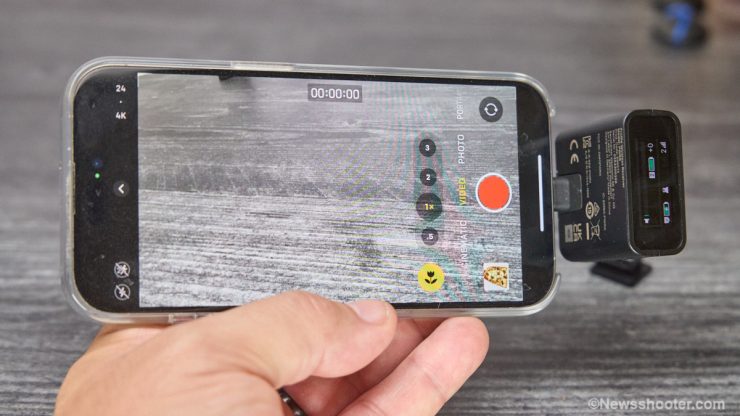
The Profile RX with the USB-C connector on an iPhone 15 Pro fits snugly. However, it does stick out a bit, which could cause it to be bumped off, especially when used handheld.
Mounting on Camera Hot Shoe
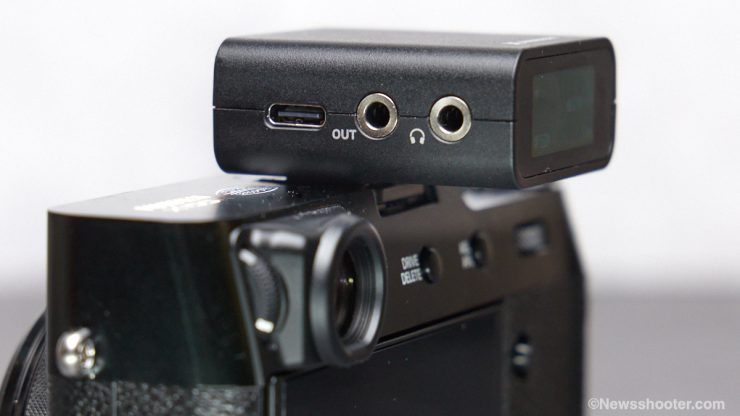
Tucked away in the Charging Bar is the cold shoe adapter for the receiver. It’s very low profile and clicks into place. It’s fairly secure when attached. A small springloaded pin holds it in place. I have an issue with how it mounts into a hot shoe on a camera, as it doesn’t have a lockdown design and can easily slide off the camera. The fit isn’t very snug.
The design is more for being compact and stored inside the Charging Bar than for a solid connection that would require a traditional lockdown on the hot shoe. Maybe Sennheiser can make a version that can be stored in the carrying case and be more secure.
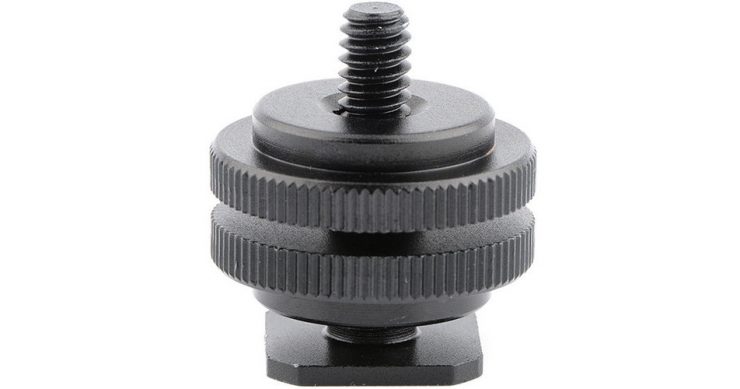
A $5 workaround for this is to purchase a cold shoe adapter with 1/4 20″ that can be screwed into the Sennheiser cold shoe adapter and locked down.
Menu
The receiver performs all the functions. The transmitter has no menu options but an on/off switch and a record button.
Below is the menu tree for all the settings.

- 1: TX1 menu – swipe right to make adjustments.
- 2: TX1 status information
- 3: TX2 status information
- 4: TX2 menu – swipe left to make adjustments.
- 5: RX menu – status information
- 6: RX menu – swipe up to make adjustments.
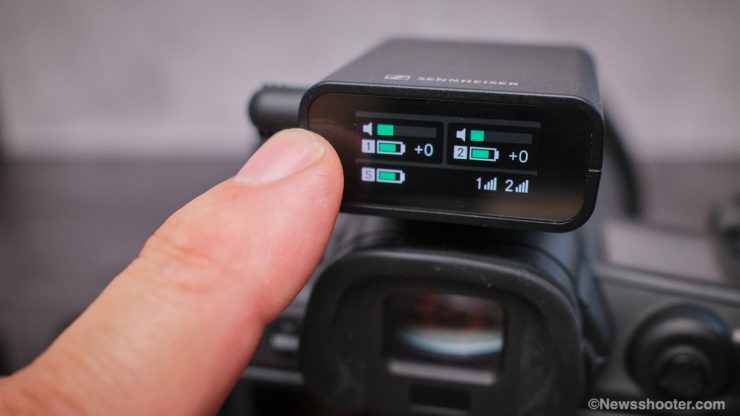
The small touchscreen menu uses a swiping technique to access different functions. It’s bright and sharp. I have average-sized fingers and find navigating easy. You can adjust the brightness of the LCD in the menu. By default, it’s set to 50%.

Swiping to the right opens channel two transmitter settings, and swiping to the left opens channel one’s. Swiping up opens the receiver’s settings.
No App Required
I greatly appreciate that Profile Wireless does not require an App to make changes. Having all the settings on the receiver works very well.
Dual Channel Settings
Out of the box the Profile is set for mono, so you will get both transmitters mixed together on two channels. If you prefer to have them split into two separate channels, set the output to stereo. If you set the output to Safety, then both transmitters will output a normal level to channel one and a safety lower level to channel two.
Clip-on mic / Transmitter
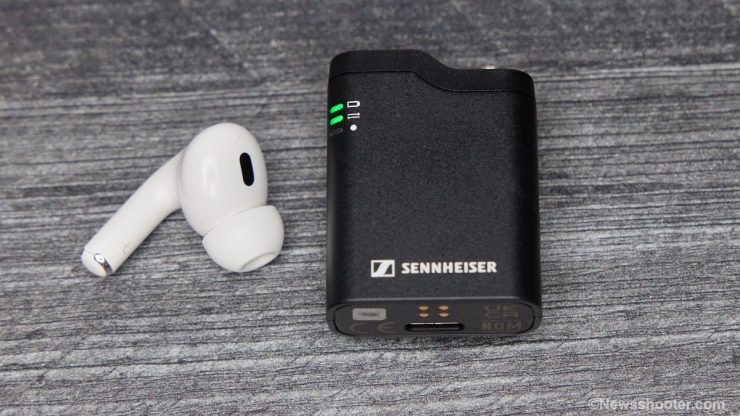
The transmitter is tiny and minimalistic, with a strong spring-loaded clip and a 1/4 20″ tap. There is no LCD screen menu; only three LED lights show it’s powered on, another that it’s paired, and the third is a red light that will turn on when it’s recording.

I like the mini Clip-on mic transmitter. It has 16 GB of internal memory for internal recordings. You can also record while transmitting. This is a big plus as wireless audio can be problematic depending on the environment it’s used in. It records the audio files in 24 Bit/48 kHz and can record up to 30 hours on the internal memory. Yes, I would have preferred 32-bit float but 24 is more than fine.
Backup and Safety Recording
When the Backup Recording Mode is activated, internal recording will automatically turn on if the wireless signal becomes too weak. Another interesting feature is Safety Channel Mode, which outputs and records backup audio at a lower volume to help protect against clipping. This reduces the risk of clipped audio and maximizes the capsule’s usable dynamic range.
For example, when using the 3.5mm cable with a camera, the Profile will send one channel an average level and the second channel a lower level. I like this feature since you don’t have 32-bit float to lean on. This feature also works while recording on each transmitter.
Backup Record Mode Test
The Backup Recording Mode is interesting. In theory, you could drop the audio into the sequence and save the video, but if it doesn’t record soon enough or in mid-sentence, then it’s not very helpful.
I tested the Backup Record Mode, and it works. I stepped outside and closed the door to force a low signal, and the transmitters started to record. They both continued to record even when I went back in the house and sat next to the camera. I like that it doesn’t stop recording when the signal is strong again. That would be a mess to deal with in post.
I took the video clip and audio recording into Premiere Pro to see how well they performed. The signal started to break up a little bit, and after four seconds, the transmitter started recording. In the sample above, I edited the backup recording into the sequence as soon as it was triggered.
This is pretty good, but the three seconds of audio before the transmitter recording might not be usable as it depends on the environment. However, it performed better than I expected.
I like that this safety net is available, and if you need the audio, the slight dropout is usable. Anything to help capture problematic audio is a good thing. I feel the best solution is to record all the time as it’s simple to do, and you don’t need to use it. The only downside is it reduces the battery life by approximately 50%
Triggering Record On RX
Sennheiser made it easy to trigger the backup recorder from the receiver. Double-tap the TX display on the RX, and it starts recording. Double-tap again, and it stops. Brilliant!
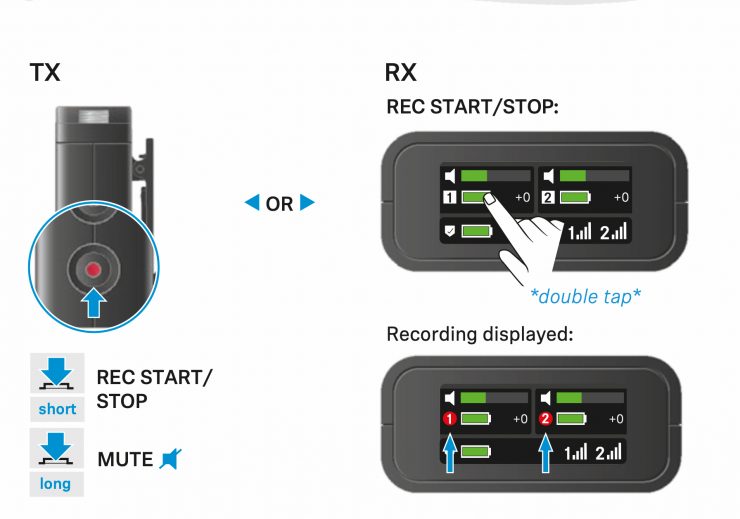
Transmitter LED Lights
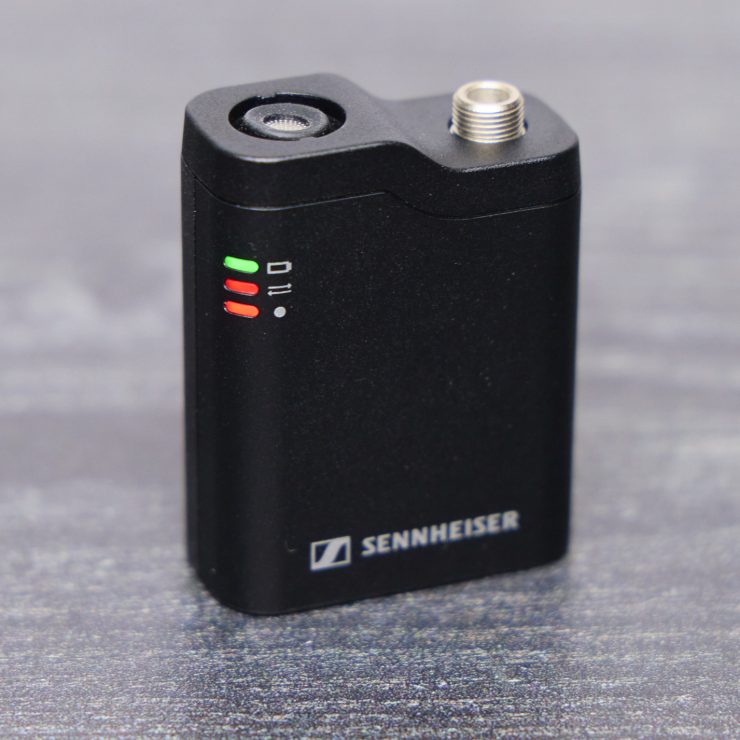
The LED lights are located on the front side of the transmitter. I understand the idea is the camera operator can see if it’s on, paired, and recording.
You can turn the LED lights off in the menu. I appreciate this option, as seeing them on camera is distracting. On the receiver, swipe to the right to make changes to transmitter one, and swipe left to access the second transmitter settings. Again this is great to be able to turn off.
I don’t use the transmitter attached to clothing as a mic. I don’t like the look, but it’s trendy on social media, and for casual use, it’s fine. Heck, people hold a lav mic like a handheld, so the bar is pretty low. Lol!
No Timecode Sync
One feature I wish it had is timecode and the ability to jam timecode to the Profile Wireless. I understand that is a big want for a $299 system, but it sure would be nice.
Range
I use these and most wireless audio systems to replace a mic cable more than going for long distances. If you require very long distances, I would move to a UHF system that performs better when range is needed, and “line of sight” is much more forgiving.
Sennheiser states the Profile’s range is up to 245 meters or 803 feet in line of sight and up to 150 meters in line of sight when body blocking is taken into account. I tested the system and found the range to be as advertised.

Clip-on mic Specifications
- Transducer principle: condenser
- Pick-up pattern: omni-directional
- Max. sound pressure level: 113 dB SPL
- Transmission power: < 20 dBm EIRP
- Operating time: ≤ 7 h (recording and transmitting) / ≤ 14 h (recording only)
- Charging time (0–100%): < 1.5 h
- Battery capacity: 280 mAh / 1036 mWh
- Dimensions: 42 x 33 x 21 mm (including clip)
- Weight: 27 g
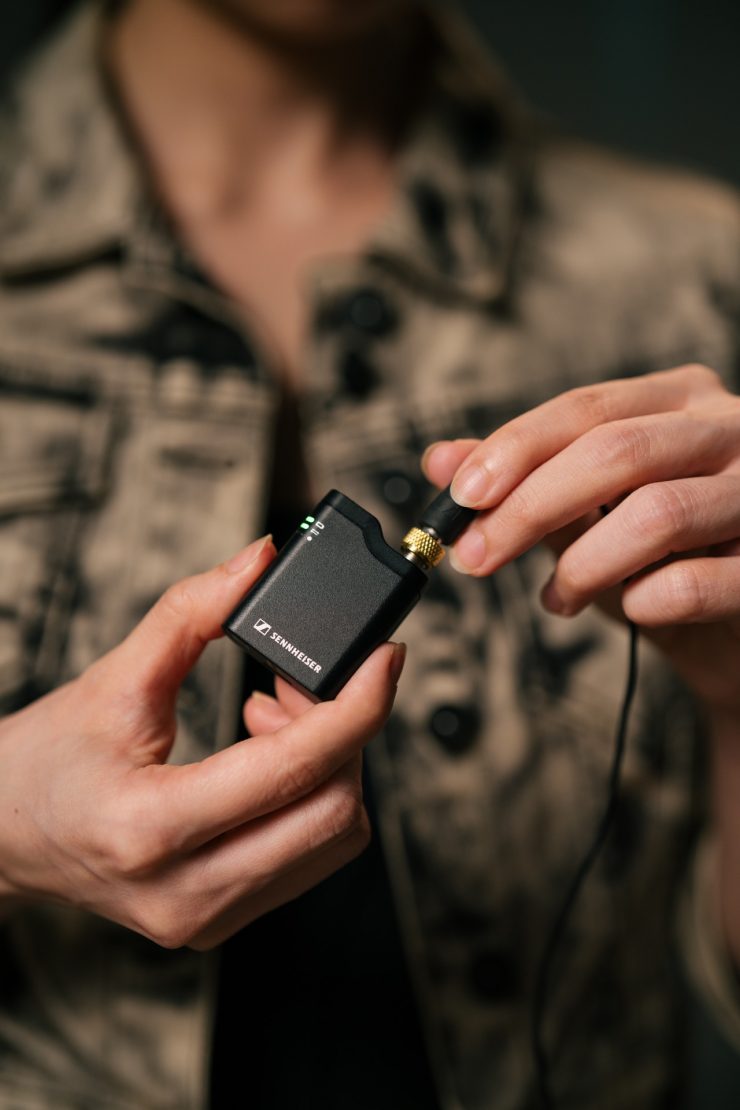
Recorder and Internal 16 GB Memory
It’s great to see more wireless audio systems offer recording capability, and some even record while transmitting, which in the US is a complicated mess due to a Zaxcom patent that prevents companies from offering the feature however, even with the patent, RODE DJI, and now Sennheiser offer recording while transmitting in the US models. How are they doing this? I have no idea. Zaxcom has a lawsuit against RODE but that doesn’t seem to stop them. I guess if you’re a big company and not based in the US, it’s no big deal.
Each Sennheiser Profile Wireless clip-on transmitter has 16 GB of internal memory. You plug the TX into your computer with the supplied USB-C cable and the TX mounts—no software is needed, just copy the files over to the computer for further use in an NLE.

I like the file naming convention with this system. It’s not 001.wav and resets back when you clear the memory, making it challenging to manage multiple files in a project with the same name. The files start with REC_0001, then the underscore _20241010 is the date, followed by the time _185149. This is great. As I said, it would prevent issues with file management in post, especially if you are handing the project over to an editor.
One downside is that the file names don’t correspond with the transmitter used, so the naming conventions are the same on both.
Price Comparisons
Below are a few popular options available that also include internal recording options. The Sennheiser Profile is priced very competitively.
| 2.4 GHz Systems | PRICE |
| Sennheiser Profile | $299 USD |
| RODE Wireless Pro | $375 USD |
| DJI Mic 2 | $349 USD |
| Sennheiser XSW-D | $323 USD |
| Hollyland Lark Max | $308.80 USD |
| Godox Virso M2 | $249 USD |
Logos, Logos, Everywhere
The casual user won’t care much about audio product manufacturer logos. Maybe it’s a status symbol, like a Gucchi logo T-shirt. In social media these days, I see some weird stuff when it comes to handling microphones, like using a lav as a mini handheld or using the transmitter with a built-in mic like a handheld mic.
The latter isn’t that bad, but holding a lav is just odd. Again, I know this is typical social media stuff, but when a product has a more prominent logo and they pop on camera, I don’t like it. I generally hide lav mics underneath clothes or inside a jacket. I have taken a black Sharpie to logos on lav clips as well.
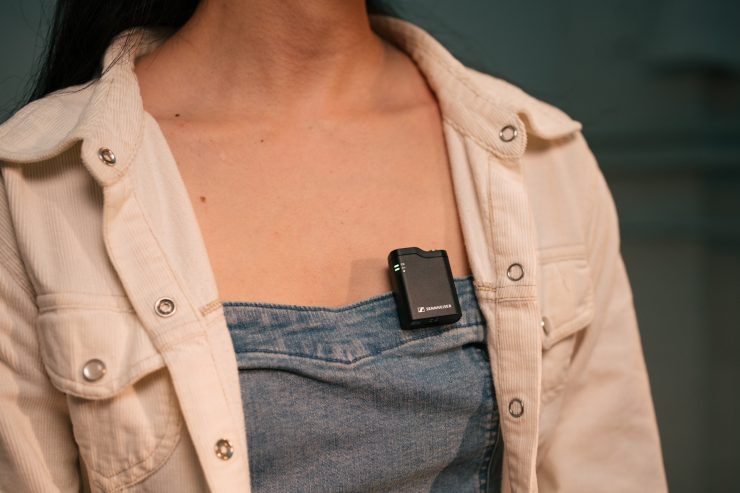
The transmitters have a logo on the bottom, and the Charging Bar has a big one on the side. If you are using it as a handheld mic, it’s distracting to me. Again, I know most people don’t mind, but in a professional journalistic environment, it’s not good, and I know these systems are being used in professional environments.
The TX with a built-in microphone is so great for picking up the sound by laying it out of the camera’s view next to the subject. It’s one of my favorite ways to use them.
Final Thoughts
Non-replaceable batteries have become the norm with these type of small systems, and while convenient, they are also bad for the environment. Over time, batteries’ lives shorten, and with no way to replace them, they go off to the dumpster, but hopefully, to E-waste recycling instead. Technology advances much quicker now, so products become obsolete much quicker, they will most likely get replaced before the battery is unusable.
The 2.4 GHz wireless system space is crowded, and the Sennheiser Profile Wireless system offers some unique ideas. It’s also priced well at $299 USD. I have found these systems very handy, especially with smaller hybrid camera setups and when long distances are not required. The handheld mic configuration is interesting and very unconventional, but the options are good.
I like that Senheisser included a locking 3.5mm connector for a lav mic. While the kit doesn’t include a lav any 3.5mm model will work, giving you a secure connection with better audio quality and not seeing the transmitter clipped on clothing. Again, I love options, and the Sennheiser Profile wireless system has many at a competitive price.





